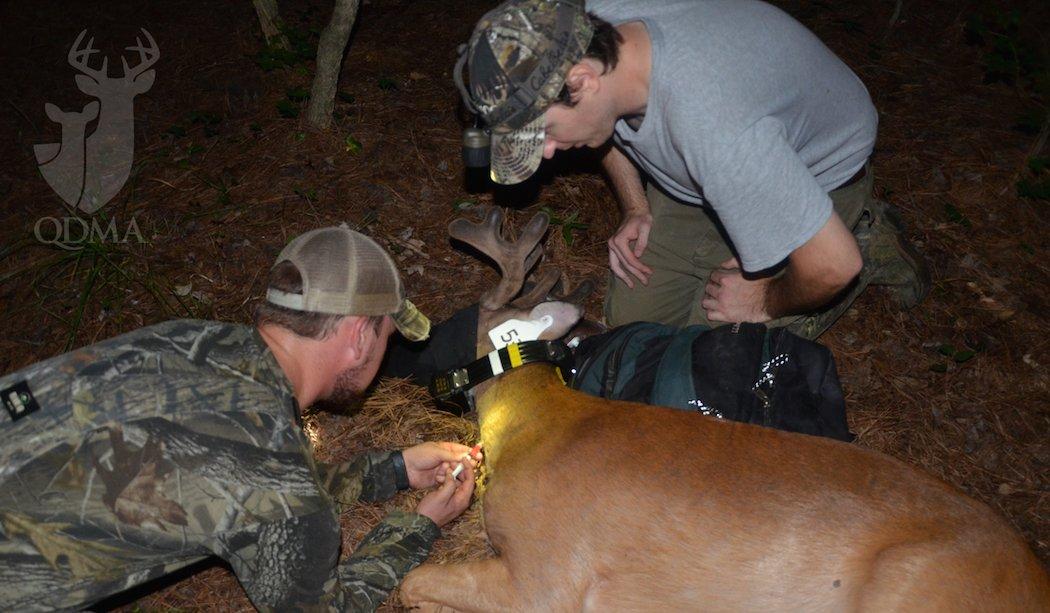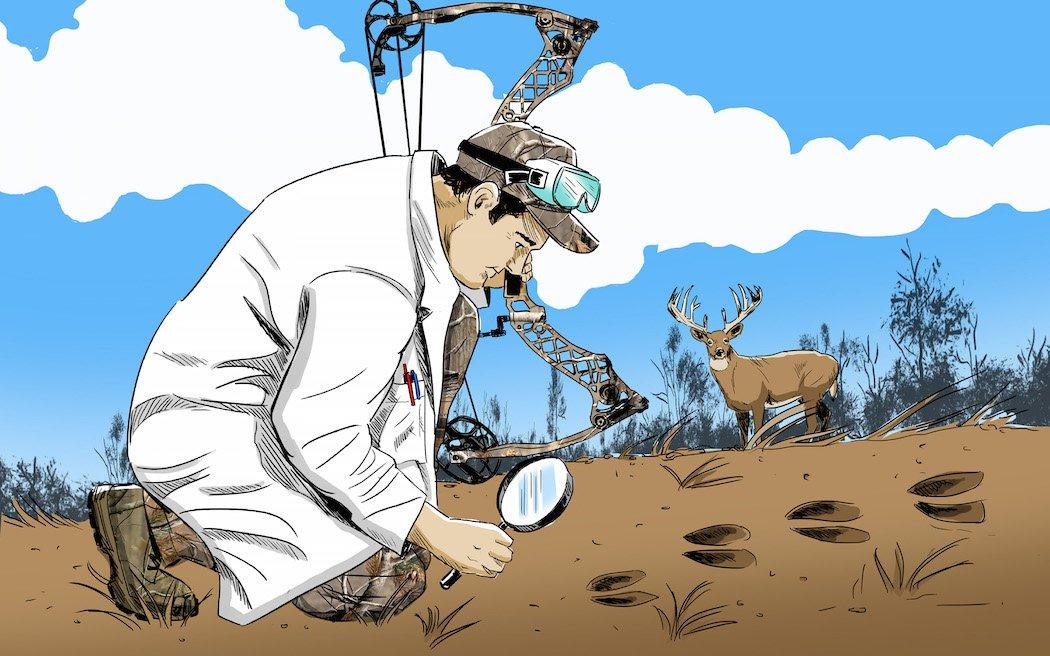Real Data on Hunting Real-Life Bucks
Throughout the years, most of us have had to rely on our own experiences or reading about the experiences of others to improve our hunting success. The problem is we sometimes draw the wrong conclusions from our past experiences, and misinformation from others can be passed down for generations as fact. So where is a deer hunter to turn for reliable information? Science, of course.
The invention of GPS-transmitter technology has given researchers amazing insight into the daily habits of white-tailed deer, particularly mature white-tailed bucks. Scientific papers aren't the first place an avid deer hunter would think to look for deer hunting advice, but they can certainly provide valuable hunting information. You just have to get past the statistical jargon and scientific-speak.
Let's take a look at some of the latest deer research and what it has taught us about the science of killing big bucks.
Home Ranges
One piece of the whitetail puzzle that has been studied in detail thanks to the availability of GPS technology has been home range size and use. The one-square-mile figure that is often quoted in popular hunting articles may be close to the average size of a buck's home range, but it really doesn't tell the full story. What research has revealed is the individuality of whitetail bucks. Home ranges vary greatly between various types of habitat and even between individual bucks in the same quality habitat.
Clint McCoy is a deer biologist with the Ohio Division of Wildlife. While getting his master's degree and Ph.D. from Auburn University, Clint conducted research tracking the movements and home ranges of 37 bucks at the 6,400-acre Brosnan Forest in South Carolina. His research showed an average home range size of 350 acres, but it varied from as small as 60 acres up to 754 acres. Interestingly enough, the two smallest and two largest home ranges in that study belonged to yearling bucks.
Researchers from Penn State University have been using GPS collars to monitor deer in multiple study areas since 2013. They have put collars on more than 100 deer to date. The study — known as the Deer-Forest Study — found home range sizes varied seasonally, growing from an average of approximately 400 acres in September to nearly 2,000 acres during the rut. Interestingly, home range sizes dropped to approximately 100 acres during Pennsylvania's rifle season.
GPS-based research has taught us that once established, bucks rarely abandon their home ranges. We have also learned that within their home range, bucks have a core area which is defined as the area where a deer spends at least 50 percent of its time. These core areas are often only 5 to 15 percent of the buck's home range, which is typically less than 100 acres.
The good news for deer hunters is you don't have to own or hunt hundreds of acres to have a mature buck spend the majority of his time on the property. Even owners of small tracts of land can be successful by providing all the buck's daily needs, or in some cases, just a key piece of habitat that is lacking from surrounding properties.
Reaction to Hunting Pressure

In addition to looking at home range size, Clint McCoy's South Carolina study also looked at the effects of hunting pressure on his GPS-collared bucks. What he found was bucks reacted very quickly to the presence of hunters. After just 12 hours of hunting pressure in one location, the odds of a buck showing up within killing range of a stand was cut in half. McCoy also looked at how long it would take that same stand to recover from hunting pressure. The data revealed that, on average, bucks avoided a stand for three days after it was hunted.
At the 2016 Southeast Deer Study Group Meeting, Andrew Little, with the University of Georgia, presented findings from his research in Oklahoma. Little tracked GPS-collared deer on areas with varying degrees of hunting pressure. What he discovered was bucks quickly recognized hunting pressure regardless of hunter density and responded by moving less and spending the majority of their time in pockets of unhunted cover. This correlates with the Deer-Forest Study in Pennsylvania that found buck home ranges shrunk to an average of 100 acres during the rifle deer season.
The take home message here is to make sure your scouting and hunting is as low impact as possible. Move stands often so you don't overhunt any one area. If possible, provide a sanctuary on the property where mature bucks can feel safe from hunting pressure. Limit your hunting to the outskirts of the sanctuary and pay close attention to wind direction (keep your scent out of the sanctuary) and how you get to and from your stands.
The October Lull
Can't find those bucks you were seeing all summer? It must be the October lull — that dreaded time of year when bucks seemingly crawl into a hole and hide out until the pre-rut. It sure can feel that way, but research doesn't support such a lull.
"Numerous research projects clearly show a pre-rut lull in buck activity simply does not exist, said Kip Adams, a certified wildlife biologist and the Quality Deer Management Association's director of education and outreach. Buck movement continues to increase from summer up through the rut.
So if buck movement is actually increasing through October, why do so many hunters complain of a lull in activity?
"Likely the largest reason for shifting movement patterns by deer is hunting seasons have opened and hunters are hitting the woods, said Adams. Nothing can alter a deer's behavior faster than suddenly having its daily routine interrupted by hunters and ATVs."
Another culprit that may be behind the October Lull is a seasonal shift in food sources. In the late summer, bachelor groups of bucks are often very visible feeding in agricultural fields and food plots. As acorns and soft mast become available, those summer food sources can quickly be abandoned, leaving hunters wondering where all the deer have gone.
Don't stop hunting a buck just because of a perceived October lull. Instead, minimize hunting pressure using the tactics mentioned in the hunting pressure section, and key in on the current preferred food sources in your area.
Timing of the Rut
The idea of what triggers and drives the whitetail rut has been fodder for hundreds of outdoor articles throughout the years. And for many of those years it was widely accepted the moon somehow played a major role. Modern research, however, has taught us that's not the case. Instead, research has revealed that for any given location, the rut occurs at approximately the same time each year, regardless of moon phase or weather conditions. The driving factor being photoperiod, not the moon.
By measuring the fetuses of road-kill and hunter-harvested does, biologists can very accurately determine conception dates. This data has been collected for decades by numerous state agencies and continues to support the idea that the peak of breeding occurs at the same time every year. However, it is important to remember there will always be does that come into estrous earlier and later than that peak date. When the rut activity peaks where you hunt has more to do with when each local doe comes into estrous than it does a specific calendar date. One thing's for sure, though. Those dates won't be influenced by the moon phase or weather patterns.
Hunt as much as you can during the rut, regardless of weather or moon phase. The key to having one of those incredible sits during the rut hinges on being in the stand when one or more of your local does comes into estrous.
GPS-based research is providing hunters with a fascinating look into the daily lives of white-tailed deer. Some of the research has confirmed what hunters have known all along, while some has debunked hunting myths that were passed down for generations as fact. Hopefully you can take some of the science presented here and combine it with your hunting experience to tip the odds in your favor this fall.
Editor's Note: This was originally published November 4, 2016.
Click here for more deer hunting articles and videos.
Check us out on Facebook.







